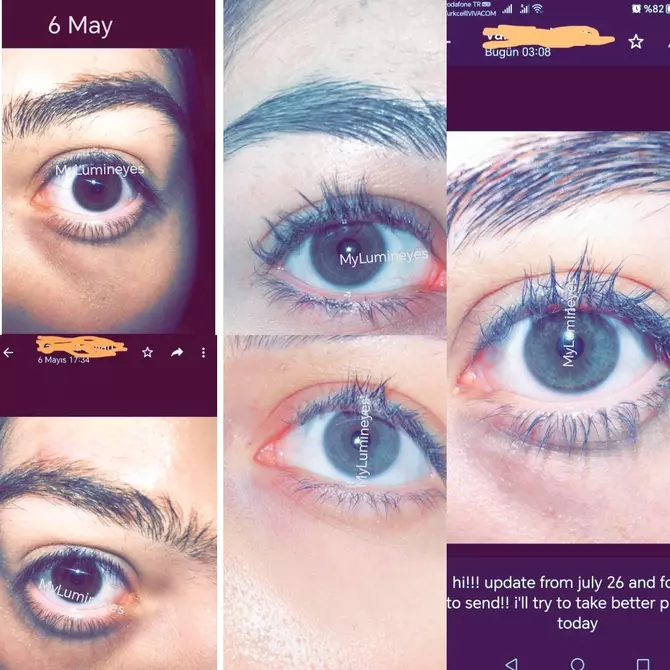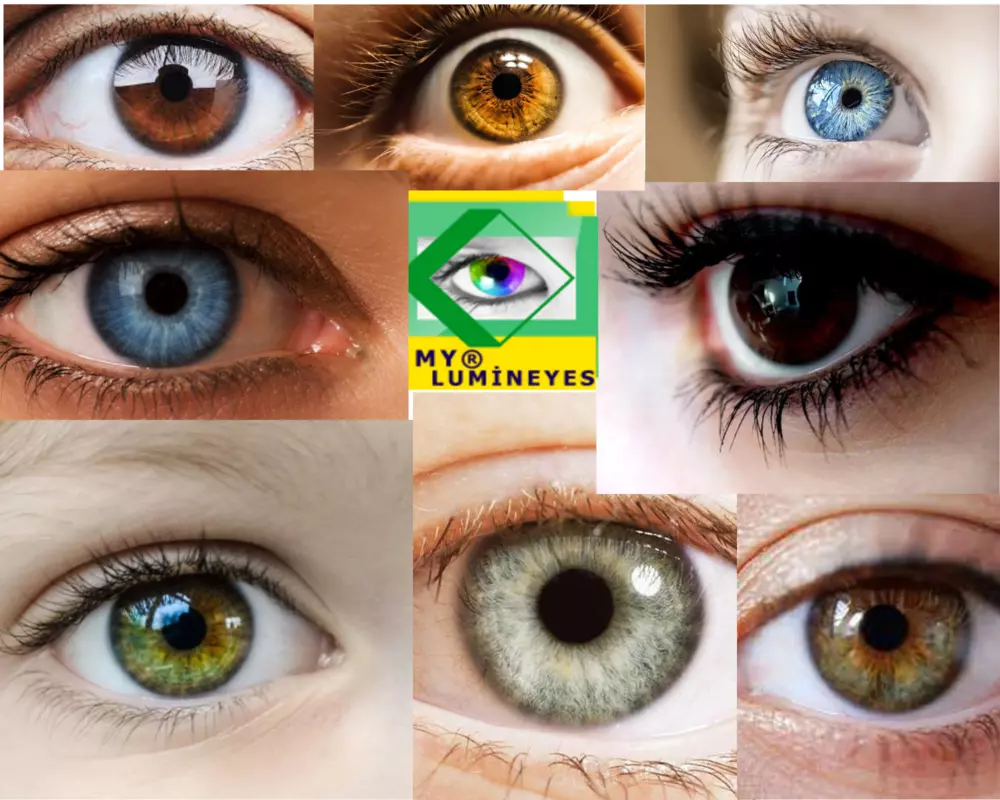What Is Melanin and How Does It Affect Eye Color?
Melanin is the natural pigment that gives color to the iris, skin and hair. In the eyes, melanin is concentrated in specific layers of the iris and directly determines whether a person has blue, green, hazel or brown eyes. The amount, type and distribution of melanin define the entire spectrum of human eye color.
From a medical perspective, eye color is not just a cosmetic feature. It reflects how light is absorbed and scattered inside the iris. This is why two people with brown eyes may still have very different depth, brightness and patterns when you look closely.
Types of Melanin in the Eye
There are two main types of melanin that influence eye color:
Eumelanin: A dark brown–black pigment. Higher amounts of eumelanin usually produce dark brown eyes.
Pheomelanin: A red–yellow pigment. When present in smaller amounts and combined with scattering, it contributes to hazel, amber and green tones.
The exact mix and location of these pigments inside the iris stroma and posterior layers determine how the eye looks under different lighting conditions.
How Melanin Creates Different Eye Colors
Dark Brown Eyes: High melanin content absorbs most of the light, resulting in deep, dark eyes. These are the most common worldwide.
Light Brown / Hazel Eyes: Moderate melanin with some light scattering. These eyes can look lighter in sunlight and darker indoors.
Green Eyes: Lower melanin levels combined with specific scattering and pheomelanin, creating a mixed, rare appearance.
Blue / Grey Eyes: Very low melanin in the front layers of the iris. Most of the perceived color comes from light scattering, not blue pigment itself.
If you want to better understand where your own eyes fit in this spectrum, you can read our detailed guide:
What Is My Eye Color?
Melanin, Light Scattering and Eye Brightness
The iris does not contain blue or green dye. Instead, melanin controls how much light is absorbed, while the microscopic structure of the iris decides how the remaining light is scattered. This complex interaction is what creates bright blue, grey, green or hazel tones.
In eyes with low melanin, more light is scattered back to the observer, making the iris appear lighter and more detailed. In heavily pigmented eyes, most light is absorbed, creating a darker but very intense gaze.

Can Melanin in the Eye Change Over Time?
In infancy and early childhood, melanin in the iris can increase, which is why many babies are born with lighter eyes that darken over the first years of life. In adults, natural and dramatic color shifts are uncommon, but subtle changes in brightness or shade may be noticed.
Lighting conditions, pupil size, systemic diseases, medications or pigment dispersion can affect how the iris appears. For more on why eyes sometimes look lighter or darker, see:
Why Does My Eye Change Color?
Melanin, Rare Eye Colors and Beauty
Very low or uneven melanin levels can lead to rare eye colors such as green, amber or grey. These tones are often perceived as “striking” because they are less common and show more detailed iris patterns.
However, beautiful eyes are not defined by rarity alone. The clarity of the sclera, eyelid shape, symmetry and facial harmony are just as important. For a broader look at beauty and rarity, you may also read:
Beautiful Eyes: Causes & The Rarest Eye Colors.
Medical Eye Color Change and Melanin
Modern medical approaches to changing eye color focus on carefully reducing melanin in specific layers of the iris. The aim is to work with the patient’s natural anatomy rather than covering the eye with artificial implants or tattooing.
If you are curious about the medical side of controlled melanin reduction and iris depigmentation, you can find an overview here:
Laser Eye Color Change.
Scientific View on Melanin and Iris Anatomy
Eye color is influenced by genetics, the density of pigment cells, collagen structure in the iris and the way light interacts with these tissues. The iris has multiple layers, and melanin can be located differently in each layer.
For a general medical description of the iris as the colored part of the eye, you can review the American Academy of Ophthalmology’s information:
AAO – Iris: The Colored Part of the Eye.
FAQ – Melanin and Eye Color
What is melanin in the eye?
Melanin is the natural pigment stored in the iris. The amount and distribution of melanin determine whether eyes appear brown, hazel, green, blue, or grey.
Why do some people have lighter eyes?
People with lighter eyes have less melanin in the front layers of the iris. Light scattering and iris structure make the eye look blue, green, or grey even though there is no blue pigment.
Can melanin in the iris increase or decrease over time?
In early childhood, melanin may increase, darkening the eyes. In adults, large natural changes are uncommon, but small variations in appearance can occur due to light, health, or pupil size.
Do diet or vitamins change melanin in the eye?
There is no scientific evidence that diet or supplements can significantly change iris melanin in a healthy eye. Any treatment claiming to “naturally” change eye color with drops or pills should be viewed with caution.
What is heterochromia, and how is it related to melanin?
Heterochromia means that one eye, or part of one eye, has a different color. It is usually caused by uneven melanin distribution or underlying medical conditions. A proper eye examination is recommended if heterochromia appears suddenly.
How does laser eye color change involve melanin?
Laser eye color change techniques target melanin particles in selected iris layers, aiming to reduce pigment density while preserving eye structures. This should only be evaluated in a controlled medical setting, not through cosmetic products.


